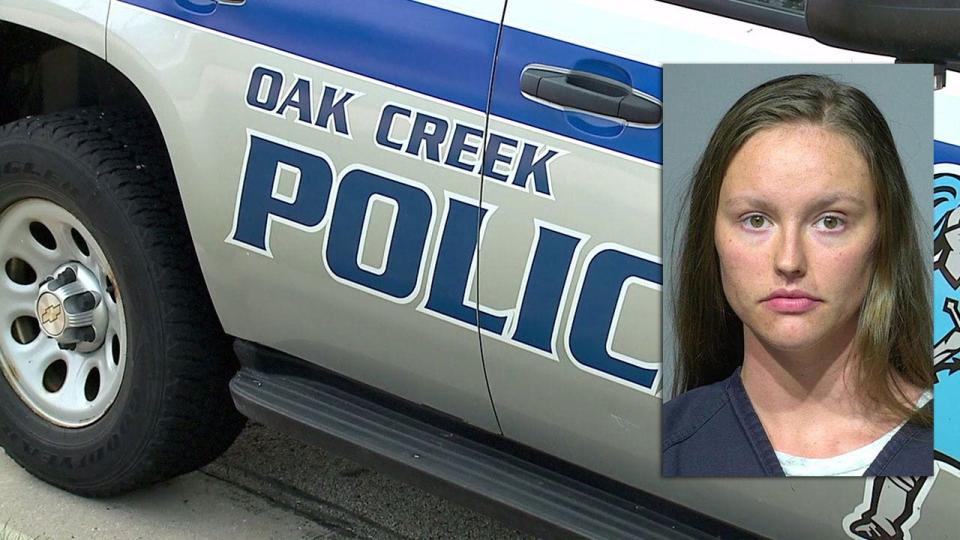As investigators continue to determine the cause of the boat collision that toppled the Francis Scott Key Bridge, questions linger about what safety measures were in place before the crash that killed six construction workers.
The workers, all employees of Hunt Valley-based firm Brawner Builders Inc., were filling potholes shortly before 1:30 a.m. on March 26, when police officers with the Maryland Transportation Authority began sending out warnings that a cargo vessel had lost power and was about to collide with the structure.
The Baltimore Sun obtained a copy of Brawner Builders’ 82-page safety policy. The company, which is not unionized, said in its policy it provides guardrails on walkways and bridge projects where people and equipment must cross over excavations, but does not mention any protections for projects near or over waterways like the Key Bridge. Federal labor regulators previously investigated and cited the company four times for failing to protect its workers with protections against falls, and have fined Brawner Builders almost $11,000 since 2018.
Federal labor law requires that at least one lifesaving skiff be “immediately available” where employees are working over or adjacent to water.
The company has previously used safety vessels, according to court documents from a personal injury case brought by a former employee in 2011. Dino Kalandras said he suffered an injury while working on a Brawner Builders vessel, but was told Brawner Builders’ insurance did not cover his injuries because he was not listed as a crew member at the time.
The case was later settled, according to court records.
Jeffrey Pritzker, Brawner Builders’ executive vice president, declined to answer questions about the company’s safety protocols, including whether there was a lifesaving boat present at the Key Bridge, citing an ongoing investigation led by the National Transportation Safety Board.
The company’s safety director, Pat Hart, did not respond to a request for comment.
Coast Guard Petty Officer Mikaela McGee was not immediately able to say whether officials saw any Brawner Builders safety vessels in the river at the time of the collision.
Gov. Wes Moore, a Democrat, has praised transportation authority officers for their quick response, which he said saved oncoming motorists from crossing the bridge before it crumbled. Those calls did not reach the construction workers, who are presumed to have died when they fell in the Patapsco River. Divers recovered the bodies of two men, Alejandro Hernandez Fuentes and Dorlian Ronial Castillo Cabrera, but four more remain missing.
The pilot onboard the Singapore-flagged vessel Dali also issued a mayday call less than three minutes before the ship crashed into one of the bridge’s support columns.
Pritzker declined to say whether Brawner Builders held responsible for its workers’ deaths the Dali’s owner and manager, who filed earlier this week in federal court to limit their liability, but said the litigation means it will take “many years” to reach a resolution. The accident could be the largest-ever financial maritime loss.
Pritzker, the Maryland Transportation Authority, and the Maryland Occupational Safety and Health agency (MOSH) could not immediately provide a copy of the specific contract or safety plan the company’s workers were operating under at the time of the collision. Brawner Builders has held at least 21 contracts with the Maryland Department of Transportation since 2019, according to a public contracts database.
A MOSH spokesperson said via email it would release a copy of the company’s specific safety plan after it concludes its investigation, which could take up to six months.
Brawner Builders’ most recent contract, according to the database, with the Maryland Transportation Authority which began Jan. 31, was to provide on-call highway and road paving services. The value is $12.5 million and the contract ends in January 2028. It wasn’t immediately clear whether that contract included the Key Bridge work.
The Brawner Builders construction workers working on the Key Bridge were employed as a seven-man team to fill potholes at the time of the collapse. One crew member survived the fall, along with a state bridge inspector who was contracted with Eborn Enterprises, according to Carter Elliott IV, the governor’s spokesperson.
The Key Bridge workers’ shift started at 9 p.m., though they arrived beforehand to set up crash attenuators and traffic cones. They were expected to finish before 5 a.m., according to Pritzker.
The company’s insurance company is covering the survivors’ medical bills and the company will pay for grief counseling and compensate employees’ families as workers’ compensation claims are being processed. In addition, the company is crowdfunding via GoFundMe to raise $300,000, all of which will go toward their employees’ widows and surviving children.
“No one is missing any paychecks,” Pritzker said.
The Occupational Safety and Health Administration has cited Brawner Builders seven times, including four safety violations, and has fined the company a total of $10,775 since 2018, according to online records.
The most recent violation before the bridge collapse was in October 2021, when OSHA issued two violations related to not providing fall protection during a site inspection at Talbott Springs Elementary School in Columbia. The two violations came with a $5,600 penalty.
_____
Signup bonus from





